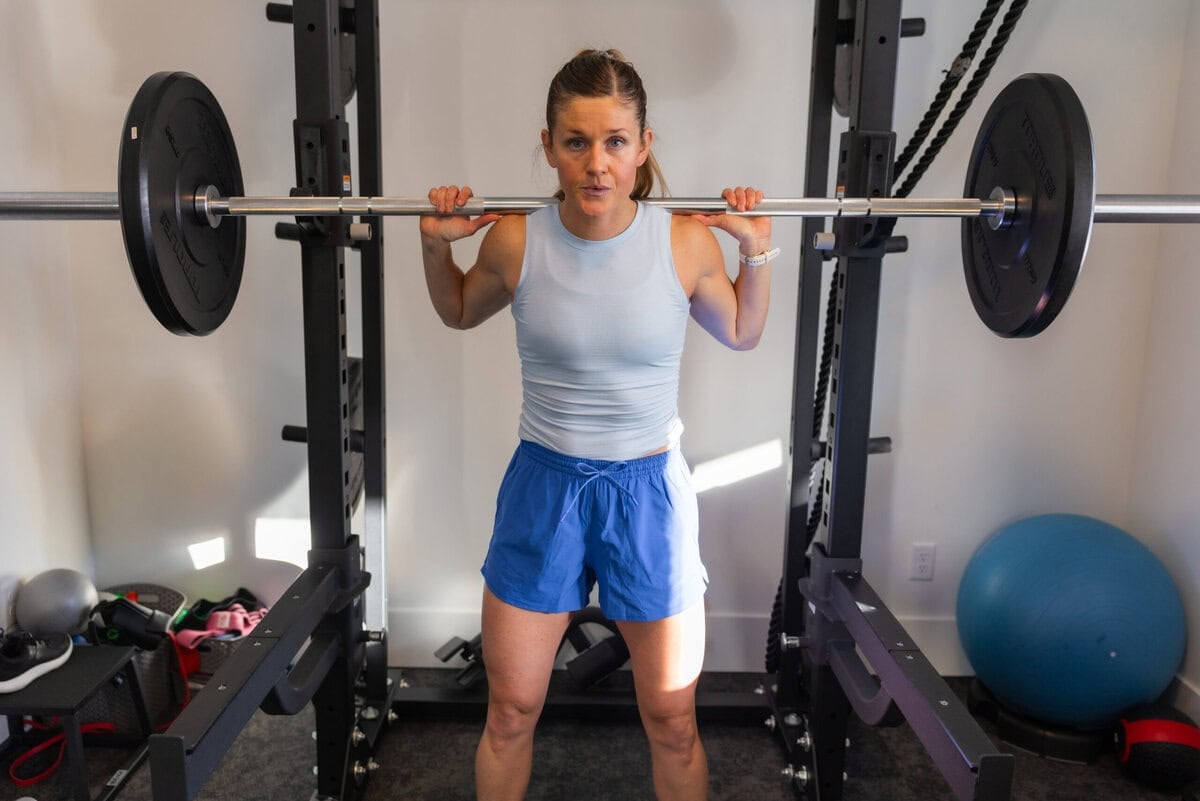Introduction: Why You Should Start Core Strengthening Today
In the world of fitness, beginners often focus on exercises that target large, visible muscles like the arms and legs. However, many overlook the utmost importance of the Core Muscles, which serve as the center of strength and stability in the body. The core is not just the abdominal muscles (Abs); it is a complex network of muscles that includes the abdomen, lower back, pelvis, and diaphragm. This muscle group works together as a natural belt to support the spine and maintain balance.
For beginners, starting a core strengthening program is not just a step toward achieving a lean physique, but an investment in long-term body health and injury prevention. A strong core is the foundation upon which all other movements are built, whether you are exercising or performing simple daily activities like bending down to tie your shoes or lifting a grocery bag.
This article aims to be your comprehensive and detailed guide to core strengthening exercises for beginners. We will review the benefits of these exercises, explain the correct way to perform them, and provide you with a practical program you can start immediately.
I. Understanding the Core Muscles: What Are They and Where Are They Located?
Before we begin the exercises, it is essential to understand exactly what the core muscles are. These muscles can be divided into two main groups:
1. Outer Unit Muscles (Superficial Muscles)
These are the muscles we usually think of when talking about the "abs," and they include: Rectus Abdominis: This is the muscle that forms the "Six-Pack." Its primary function is to flex the trunk. External and Internal Obliques: Located on the sides of the trunk, they assist in rotation and lateral bending movements.
2. Inner Unit Muscles (Deep Muscles)
These are the most important muscles for stability, acting as internal "stabilizers": Transversus Abdominis: Considered the body's natural belt. It is the deepest abdominal muscle, working to pull the abdomen inward and stabilize the lower back. Pelvic Floor Muscles: They support the internal organs and contribute to stability. Multifidus: Small, deep muscles located along the spine that help stabilize each vertebra individually.
II. Key Benefits of Core Strengthening for Beginners
Strengthening the core muscles offers a wide range of benefits that go beyond aesthetics:
| Benefit | Detailed Explanation |
|---|---|
| :--- | :--- |
| <strong>Improved Balance and Stability</strong> | A strong core acts as the body's center of gravity, reducing the risk of falls and injuries, and improving performance in all athletic activities. |
| <strong>Lower Back Pain Prevention</strong> | This is the most important benefit. When core muscles are weak, back muscles have to work harder to compensate, leading to strain and pain. Core strengthening relieves pressure on the spine. |
| <strong>Improved Posture</strong> | Strong core muscles help maintain the alignment of the spine and pelvis, correcting sitting and standing posture and preventing slouching. |
| <strong>Increased Functional Strength</strong> | Functional strength is the strength you need to perform daily tasks. A strong core makes lifting objects, rotating, and reaching high places easier and safer. |
| <strong>Improved Breathing</strong> | Some core muscles, such as the diaphragm, play a direct role in the breathing process. Strengthening them can improve breathing efficiency. |
III. Golden Tips for Beginners Before Starting Exercises
Before you begin performing the exercises, you should keep in mind some essential tips to ensure safety and effectiveness:
1. Focus on "Activation" Not "Movement"
Initially, you should focus on activating the Transversus Abdominis muscle. Imagine trying to pull your tight pants button toward your spine without holding your breath. This is the sensation you should feel to stabilize the core.
2. Correct Breathing
Never hold your breath during exercise. The general rule is: Exhale (breathe out) during the effort (the hardest part of the movement), and inhale (breathe in) when returning to the starting position.
3. Quality Over Quantity
As a beginner, performing 5 perfect repetitions is much better than performing 20 incorrect repetitions. Proper Form is the key to activating the targeted muscles and avoiding back injuries.
4. Listen to Your Body
If you feel any sharp or uncomfortable pain in your lower back, stop immediately. You may need to modify the exercise or reduce the range of motion.
IV. Essential Core Strengthening Exercises for Beginners (with Detailed Explanation)
We have selected a set of low-impact exercises that focus on stability and deep muscle activation, which are ideal for beginners:
1. Dead Bug Exercise
This is one of the best exercises for learning how to stabilize the core while moving the limbs, and it is safer for the back than traditional abdominal exercises.
How to Perform: 1. Lie on your back with your knees bent and legs raised so there is a 90-degree angle between your thigh and shin. Raise your arms straight up toward the ceiling. 2. Press your lower back into the floor (make sure there is no gap). This is core activation. 3. Slowly lower one arm and the opposite leg toward the floor, without touching the floor, while keeping your lower back fully pressed against the floor. 4. Return the arm and leg to the starting position, then repeat the movement with the opposite limbs. Repetitions: 8-10 repetitions per side.
2. Glute Bridge Exercise
This exercise focuses on strengthening the glutes and lower back, which are an essential part of the core.
How to Perform: 1. Lie on your back with your knees bent and feet flat on the floor, shoulder-width apart. Your heels should be close to your glutes. 2. Press through your heels and lift your hips off the floor until your body forms a straight line from your shoulders to your knees. Squeeze your glutes and core at the top. 3. Hold this position for one second, then slowly lower your hips back to the starting position. Repetitions: 12-15 repetitions.
3. Bird Dog Exercise
Excellent for improving balance, coordination, and strengthening the deep back and core muscles.
How to Perform: 1. Start in a "crawling" position (on all fours), with your hands under your shoulders and your knees under your hips. Keep your back straight (neutral position). 2. Activate your core (pull your abdomen inward). 3. Raise your right arm and left leg at the same time, extending them straight until they are level with your torso. Avoid rotating your hips or arching your back. 4. Hold this position for one second, then slowly return them to the starting position. 5. Repeat the movement with the left arm and right leg. Repetitions: 8-10 repetitions per side.
4. Modified Plank Exercise
The Plank is the king of core exercises, but beginners can start with the modified version to reduce pressure on the lower back.
How to Perform: 1. Start by lying on your stomach, then lift your body so you are resting on your forearms and knees. 2. Make sure your elbows are directly under your shoulders. 3. Keep your body in a straight line from your head to your knees. Squeeze your abdominal and glute muscles tightly. 4. Avoid raising or sagging your hips. Duration: Start by holding for 20-30 seconds, then gradually increase the duration.
5. Single-Leg Abdominal Press
This exercise helps isolate the Transversus Abdominis and stabilize the pelvis.
How to Perform: 1. Lie on your back with your knees bent and feet flat on the floor. 2. Raise your right leg so your knee and thigh are at a 90-degree angle. Place your right hand on your right knee. 3. Push your hand against your knee, and at the same time, use your abdominal muscles to push your knee toward your hand, creating resistance. Your lower back should remain glued to the floor. 4. Hold this press for 3-5 seconds, then relax and repeat. 5. Complete the repetitions on the right side, then switch to the left side.
- Repetitions: 8-10 repetitions per side.
V. Suggested 4-Week Training Program for Beginners
For best results, you should incorporate core exercises into your routine 3-4 times a week, with a rest day between sessions.
| Exercise | Sets | Repetitions/Duration | Notes for Beginners |
|---|---|---|---|
| :--- | :--- | :--- | :--- |
| <strong>Dead Bug</strong> | 2 | 8 reps per side | Focus on pressing the lower back to the floor. |
| <strong>Glute Bridge</strong> | 2 | 12 reps | Squeeze the glutes tightly at the top. |
| <strong>Bird Dog</strong> | 2 | 8 reps per side | Move slowly and control the balance. |
| <strong>Modified Plank</strong> | 2 | Hold for 20-30 seconds | Keep your body in a straight line from head to knees. |
| <strong>Single-Leg Abdominal Press</strong> | 2 | 8 reps per side | Press firmly to create resistance. |
Progression Tip: Once you can comfortably perform all the exercises above for 4 weeks, you can start increasing the difficulty by: 1. Increasing the number of sets to 3. 2. Increasing the hold duration in the Plank exercise. 3. Moving to the full version of the Plank (on your toes instead of your knees). 4. Adding light resistance (such as a resistance band around the knees in the Glute Bridge).
VI. Common Mistakes Beginners Make and How to Avoid Them
To avoid frustration and injuries, pay attention to these common mistakes:
1. Arching the Lower Back
Mistake: Allowing the lower back to arch away from the floor during exercises like the "Dead Bug" or "Plank." Correction: Always "brace the core" by pulling the belly button toward the spine and pressing the lower back into the floor. This ensures that the core muscles are doing the work, not the lower back muscles.
2. Holding Your Breath
Mistake: Holding your breath during exertion. Correction: Remember the breathing rule: Exhale on effort, inhale on return. Regular breathing helps activate the deep muscles.
3. Speeding Through the Movement
Mistake: Performing repetitions too quickly. Correction: Core exercises should be slow and controlled. Slow movement increases the Time Under Tension for the muscle, which increases its effectiveness.
4. Focusing Only on the Front Abdominal Muscles
Mistake: Believing that core exercises are limited to traditional abdominal exercises (Crunches). Correction: Your program should include exercises that target all aspects of the core: front (Dead Bug), back (Bird Dog), and sides (Side Plank - you can add this later).
Conclusion: Building a Solid Foundation for a Healthy Life
The journey of core strengthening is an investment in your quality of life. As a beginner, the exercises may seem simple at first, but they are fundamental to building internal strength and stability. Remember that a strong core is the key to improving posture, reducing back pain, and enhancing athletic performance in any activity you choose.
Start slowly, focus on correct form, and be consistent. Within a few weeks, you will notice a significant difference in how you feel and your ability to perform daily tasks. Make core strengthening an integral part of your health routine, and you will find that you have built a solid foundation for a more active and healthier life.
--- Editor's Note: It is always recommended to consult a doctor or physical therapist before starting any new exercise program, especially if you have any pre-existing health issues or chronic back pain.



